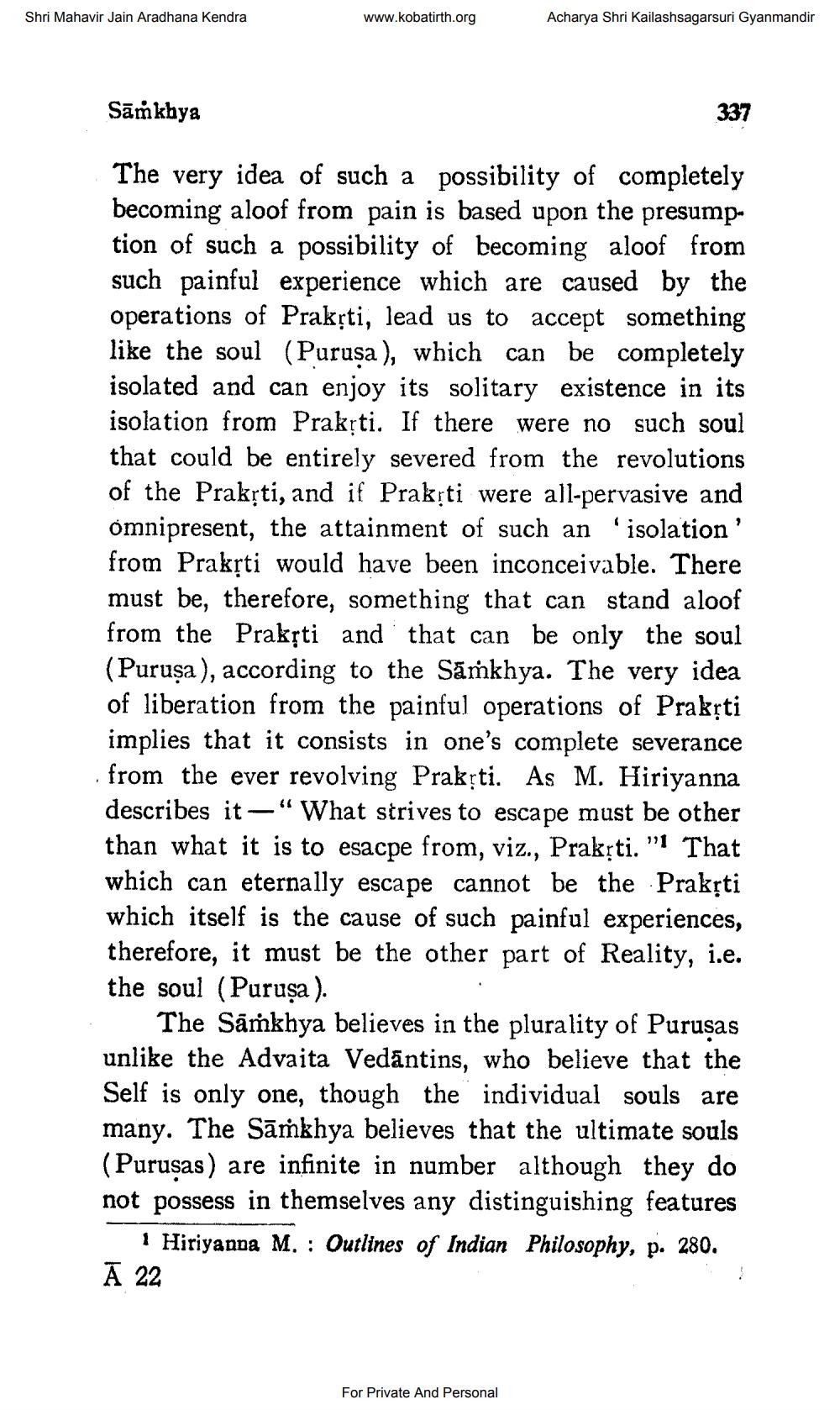________________
Shri Mahavir Jain Aradhana Kendra
www.kobatirth.org
Acharya Shri Kailashsagarsuri Gyanmandir
Sāṁkhya
337
The very idea of such a possibility of completely becoming aloof from pain is based upon the presumption of such a possibility of becoming aloof from such painful experience which are caused by the operations of Praksti, lead us to accept something like the soul (Purusa), which can be completely isolated and can enjoy its solitary existence in its isolation from Prakřti. If there were no such soul that could be entirely severed from the revolutions of the Prakrti, and if Prakti were all-pervasive and omnipresent, the attainment of such an 'isolation' from Praksti would have been inconceivable. There must be, therefore, something that can stand aloof from the Praksti and that can be only the soul (Puruşa), according to the Sāmkhya. The very idea of liberation from the painful operations of Praksti implies that it consists in one's complete severance . from the ever revolving Prakřti. As M. Hiriyanna describes it-“What strives to escape must be other than what it is to esacpe from, viz., Praksti. "\ That which can eternally escape cannot be the Prakrti which itself is the cause of such painful experiences, therefore, it must be the other part of Reality, i.e. the soul (Purusa).
The Sāṁkhya believes in the plurality of Purusas unlike the Advaita Vedāntins, who believe that the Self is only one, though the individual souls are many. The Sāmkhya believes that the ultimate souls (Purusas) are infinite in number although they do not possess in themselves any distinguishing features
Hiriyanna M. : Outlines of Indian Philosophy, p. 280.
A 22
For Private And Personal




